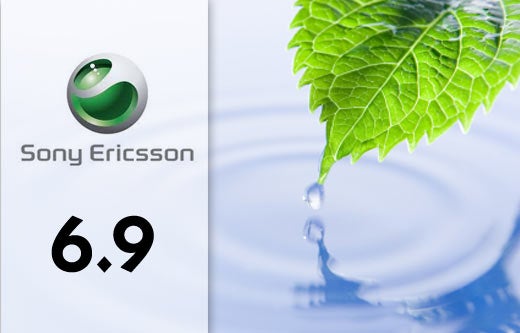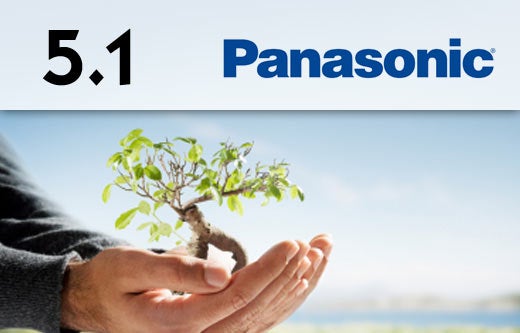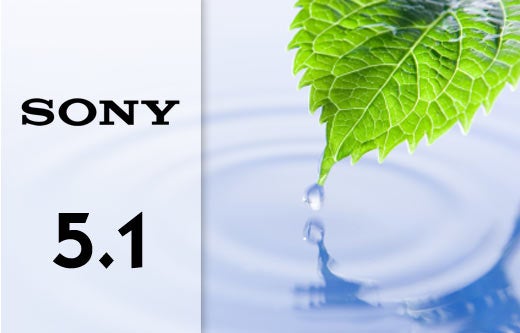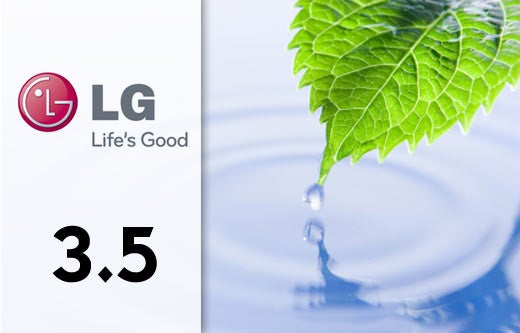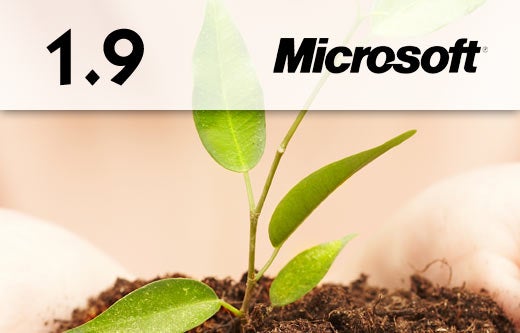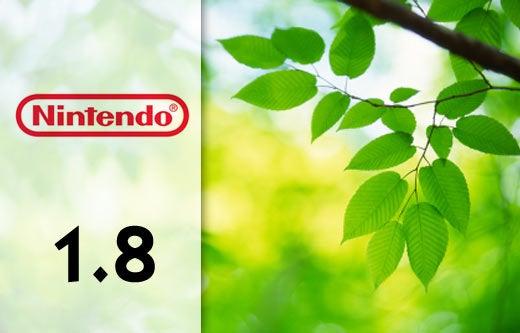The latest edition of the Greenpeace Guide to Greener Electronics exposes the widening gap between companies that make good on their promises to clean up, and those that don’t. While some of the top electronics manufacturers are failing to keep their environmental commitments, others are innovating and making significant gains in phasing out toxic chemicals, increasing energy efficiency, and making it easier for consumers to recycle old products.
This slideshow highlights Greenpeace’s 2010 Version 16 ranking of the 18 top manufacturers of personal computers, mobile phones, TVs and game consoles according to their policies on toxic chemicals, recycling and climate change.
Additional resources from the IT Business Edge Knowledge Network:
Click through for the latest Greenpeace ranking of 18 top manufacturers of personal computers, mobile phones, TVs and game consoles.
Nokia remains in first place with the score of 7.5. Overall, Nokia does best on the toxic chemicals criteria, followed by energy, and does least well on e-waste issues. Nokia scores very well on toxic chemical issues; all its new models have been free of PVC since the end of 2005, and all new models of mobile phones and accessories launched in 2010 are on track to be free of brominated compounds, chlorinated flame retardants and antimony trioxide, therefore achieving its goal to phase out these substances. However, despite Nokia’s support for further restrictions for chlorinated and brominated substances in legislation, it fails to score for its position on the RoHS (Restriction of Hazardous Substances in electronics) Directive, as it does not openly support restrictions on at least PVC vinyl plastic, chlorinated flame retardants (CFRs) and brominated flame retardants (BFRs) in the next three to five years, i.e., in RoHS 2.0.
Sony Ericsson remains in second place, with the same score of 6.9. It is the best performer on the toxic chemicals criteria of all the ranked brands, being the first to score full marks on all chemicals criteria. It also does well on energy. All Sony Ericsson products are already free from PVC vinyl plastic and brominated flame retardants (BFRs), with the exception of a few components that are still being phased out. Sony Ericsson has already met the challenge of the new criterion on chemicals by banning antimony, beryllium and phthalates from new models launched since January 2008. Moreover, Sony Ericsson is proactively lobbying in the EU for the revision of the RoHS (Restriction of Hazardous Substances in electronics) Directive to adopt a three to five year timeline for further restrictions on organo-chlorine and bromine substances.
Philips stays in third place, with an increased score of 5.5, up from 5.1. Philips gains points for launching an LED TV that is free from PVC and BFRs, the first product in this category to be free from these hazardous substances. Philips also has a shaver range and adapters that are PVC and BFR-free, TVs with PVC/BFR-free housings (EU market only so far, for nearly two years), as well as PVC/BFR-free Senseo and oral health care products and a PVC-free remote control.
Philips scores well on toxic chemical issues; it has committed to eliminating PVC vinyl plastic and all brominated flame retardants (BFRs) in all its new product models by the end of 2010, and six types of phthalates and antimony by 31 December 2010. Beryllium and its compounds are already restricted; arsenic has been eliminated from TV glass and other display products from 2008. However, it fails to support the need for the RoHS 2.0 Directive (Restriction of Hazardous Substances in electronics, currently being revised) to adopt an end-of-life focused methodology for adding new substances and an immediate ban on organo-chlorine and bromine compounds.
HP climbs to fourth place from eighth with an increased score of 5.5 (up from 4.9), as a result of its progress in bringing products that are free from PVC and BFRs onto the market and a new commitment to phase out beryllium and compounds by July 2011. HP now has many PVC and BFR-free products on the market, including a desktop PC with PVC-free power supply, several series of notebooks, another desktop and two LCD monitors. It has also recently launched the first PVC-free printer. To gain top marks for its halogen-free products, HP now needs to phase out PVC and BFRs from its whole product line. HP also scores well for its support for improvements to the revised EU RoHS Directive (Restriction of Hazardous Substances in electronics); specifically, to adopt restrictions on PVC vinyl plastic and brominated flame retardants (BFRs) as a focus for the restriction of chlorine and bromine from electrical and electronic products. HP believes restrictions of PVC and BFRs in RoHS may be possible in 2015 as long as specific issues and exemptions are addressed.
Samsung rejoins the leaders in the Guide, rising from 13th place to fifth, as a result of one of its penalty points being lifted and improvements in its score on chemicals. It remains encumbered by one penalty point, which was first imposed in v.14 of the Guide for backtracking on its commitment to eliminate brominated flame retardants (BFRs) in new models of all products by January 2010 and PVC vinyl plastic by end of 2010. The second penalty point, served in v.15 for misleading its customers and Greenpeace by not admitting that it would not meet its public commitment until the timeline for that commitment had passed, has been lifted.
Motorola drops from fourth place to joint sixth, with the same score of 5.1, as a result of other companies rising up the ranking.
Motorola scores relatively well on the chemicals criteria and has a goal to eliminate PVC vinyl plastic and brominated flame retardants (BFRs), though only in mobile devices and not all its products introduced after 2010, despite the fact that Sony Ericsson and Nokia are already there. All of its mobile phones are now PVC-free and it has two PVC and BFR-free mobile phones, the A45 ECO and the GRASP; all chargers are also free from PVC and BFRs. For more points, Motorola needs to complete the phase out of BFRs in mobile phones and start working on the phase out of PVC and BFRs in its other products. It also fails to support the need for RoHS 2.0 (EU Directive on the Restriction of Hazardous Substances in electronics, currently being revised) to adopt an end-of-life focused methodology for adding new substances and an immediate ban on organo-chlorine and bromine compounds. Motorola needs to clarify its stance regarding the position of the trade federation TechAmerica on further restrictions and in particular PVC, chlorinated flame retardants (CFRs) and (BFRs) within three to five years.
Panasonic stays in sixth place (together with Sony and Motorola) with an increased score of 5.1, up from 4.9. It gains points on the voluntary take-back of its products for launching the first program for the take-back of TVs in a non-OECD country. Despite this, it is still weakest on the criteria relating to e-waste and recycling and scores best on the chemicals and energy criteria.
Panasonic’s score on use of toxic chemicals is boosted by many models of PVC-free products on the market, including notebook computers, mobile phones, home cinemas and lighting equipment; it gives two examples of products free of brominated flame retardants (BFRs) – fluorescent ceiling lamps and a kitchen lamp; however, it needs to show more progress in bringing new products onto the market that are free from these hazardous substances in order to keep these points. Despite putting these PVC-free and BFR-free products on the market, Panasonic has yet to commit to fully eliminating all PVC and BFRs across its whole product portfolio. It also fails to show support for improvements to the revised EU RoHS Directive (Restriction of Hazardous Substances in electronics); specifically, a methodology for further restrictions of hazardous substances, and an immediate ban on BFRs, chlorinated flame retardants (CFRs) and PVC vinyl plastic.
Sony stays in joint sixth place, tying with Panasonic and Motorola, with an increased score of 5.1, up from 4.9. Sony gains a point for providing verification for its CSR report that also includes its calculations of greenhouse gas (GHG) emissions.
Sony does relatively well on chemicals, with its score boosted by having models on the market that are partially free of PVC and BFRs, including all models of the VAIO PC, and many models of video recorder, Walkman, camcorder and digital camera. However, to keep these points, it needs to show more progress in bringing new products that are free from these hazardous substances onto the market. It still needs to set a timeline for eliminating all phthalates, beryllium copper and antimony and its compounds. Sony has yet to show support for bans on PVC vinyl plastic and brominated/chlorinated flame retardants (BFRs/CFRs) during the revision of the EU’s RoHS Directive (Restriction of Hazardous Substances in electronics).
Apple drops to ninth place from fifth, with the same score of 4.9.
Apple does best on the toxic chemicals criteria, where it scores most of its points. All Apple products are now free of PVC vinyl plastic and brominated flame retardants (BFRs), with the exception of PVC-free power cords in countries where their safety certification process is still ongoing. For this, Apple continues to score full marks (doubled). Apple scores points for its chemicals policy informed by the precautionary principle and for lobbying the EU institutions for a ban on PVC, chlorinated flame retardants and BFRs during the current revision of the EU’s RoHS Directive (Restriction of Hazardous Substances in electronics), but for full marks it needs to provide a public position on its support for immediate restrictions in RoHS 2.0 on organo- chlorine and bromine compounds. It also needs to clarify its stance regarding the position of the trade federation TechAmerica on further immediate restrictions and in particular PVC and BFRs. Apple scores only one point on information about its management of chemicals and its supply chain communications; this criterion evaluates disclosure of information flow in the supply chain. Apple also continues to score poorly for the minimal information it provides about its future toxic chemical phase-out plans.
Dell increases its score to 4.9 from 4.3, maintaining its position in 10th place, gaining points on both the chemicals and the e-waste criteria. However, Dell continues to be hampered by the penalty point imposed for backtracking on its commitment to eliminate PVC vinyl plastic and brominated flame retardants (BFRs) in all its products by the end of 2009.
Dell now scores full marks for demonstrating proactive advocacy in its support for restrictions on PVC and BFRs in the revised EU RoHS Directive (Restriction of Hazardous Substances in electronics). Dell’s first completely PVC and BFR-free products on the market are the G-Series Monitors, although PVC and BFR-free cables are currently available only in North America, Japan, Europe/Middle East and Africa. In total, it has 35 PVC/BFR reduced or PVC/BFR-free products, including laptops and a desktop. Dell has also released a BFR/PVC-free mobile phone, the Mini 3i, which is sold only in China. However, its current commitment to eliminate PVC and BFRs by the end of 2011 is limited to computing products.
Sharp drops to 11th place from ninth with an increased score of 4.7, up from 4.5 points, as a result of other companies rising up the ranking. It gains a point for the verification of its CSR report, which includes calculation of greenhouse gas (GHG) emissions.
Otherwise, Sharp scores relatively well for its policy and practice on toxic chemical issues, although it specifies the end of fiscal 2010, rather than calendar year 2010, for its phase-out of PVC and BFRs. It provides a timeline of financial year 2010 for eliminating phthalates and antimony, but there is a lack of clarity on whether the commitment to eliminate phthalates relates to all phthalates or just three. Sharp has launched many models of LCD TVs and solar modules free of PVC (except accessories) and now has 14 models of LED lightings that are BFR-free. However, it fails to show support for improvements to the revised EU RoHS Directive (Restriction of Hazardous Substances in electronics); specifically, a methodology for further restrictions of hazardous substances, and an immediate ban on brominated flame retardants (BFRs), chlorinated flame retardants (CFRs) and PVC vinyl plastic. It continues to score poorly for Chemicals Management as its Manual for Survey of Chemical Substances Contained in Parts and Materials is no longer available to the public. Its new ‘Green Procurement Guidelines’ are more confusing about eliminating BFRs than the earlier version and the ‘List of Substances’ document no longer presents criteria for identifying future substances for elimination.
Acer drops to 12th place from 11th, with the same score of 4.1 points.
Acer scores most points for its efforts on toxic chemicals. It is proactively supporting improvements to the revised EU RoHS Directive (Restriction of Hazardous Substances in electronics); specifically, a methodology for further restrictions of hazardous substances, and an immediate ban on BFRs, chlorinated flame retardants (CFRs) and PVC, for which it scores maximum points. In the last four versions of the ranking, the company has not been penalized for backtracking on its commitment to eliminate PVC and BFRs in all products by the end of 2009; as assurance that this timeline will be met, Acer launched four new PVC and BFR-free models of notebook in January 2010; four more notebooks have just been launched, together with a monitor, and Acer plans to launch more monitors and a desktop shortly. Acer now needs to transition all its products to using no BFRs and PVC. Acer’s new plan is to phase out PVC vinyl plastic and brominated flame retardants (BFRs) for personal and mobile computing products by 2011 rather than for all products – and therefore scores only one point. The company is rewarded for its commitment to phase out all phthalates, beryllium and compounds and antimony and compounds in all new products by 2012.
Fujitsu moves up to 13th place from 15th, with an increased score of 3.9 points. Fujitsu gains two points on the energy criteria, one for adopting a target for reducing its greenhouse gas (GHG) emissions to 6 percent below FY1990 levels by the end of FY2012 and another for providing a certificate of third-party verification of greenhouse gas (GHG) emissions.
Fujitsu scores highest on energy issues. It is rewarded for supporting the need for GHG emissions to peak by 2015 and for industrialized countries to cut GHG emissions by up to 30 percent. It also gains points for reporting that 100 percent of its notebook and tablet PCs released globally comply with the latest Energy Star standard. Fujitsu reports GHG emissions from its own operations for 2008, which have reduced from 2007. Although it has a new target to increase its use of renewable energy sources to three times FY2007 levels by the end of FY2012, there is no data on Fujitsu’s use of renewable energy in FY2007 globally and therefore it fails to score any points; figures for the use of renewable energy as a percentage are only provided for Europe, where at least 15 percent of purchased electricity was renewable in 2007.
LG Electronics continues to fall down the ranking, from 12th place to joint 14th, with its score dropping from 3.7 points to 3.5. It is still weighed down by the penalty point imposed for backtracking on its commitment to have all its products free of PVC vinyl plastic and brominated flame retardants (BFRs) by the end of 2010. Now only mobile phones will be free of these toxic substances from 2010; TVs, monitors and PCs have to wait until 2012 and household appliance models until 2014; there is a lack of evidence on how this program will be implemented. It also loses a point (doubled) for failing to progress on bringing PVC/BFR free products onto the market. LGE still only has one first mobile phone that is free from PVC and BFRs and six models of ‘halogen-free’ Optical Disk Drives; details about other reduced halogen products are no longer there.
LGE has yet to show support for bans on PVC, BFRs and chlorinated flame retardants (BFRs/CFRs) during the revision of the EU’s RoHS Directive (Restriction of Hazardous Substances in electronics). It scores a point for committing to eliminate the use of phthalates and antimony in new mobile phones, TVs, monitors and PCs by 2012, and all new household appliances by 2014. The use of beryllium oxide in mobile phones has already been phased out and other kinds of beryllium compounds will be banned by 2012.
Lenovo rises up the ranking to 14th position from 17th, with an increased score of 3.5, up from 1.9 points. It remains encumbered by a penalty point imposed for backtracking on its commitment to eliminate PVC vinyl plastic and brominated flame retardants (BFRs) in all its products by the end of 2009.
Lenovo has made significant progress on three of the energy criteria; it now supports the need for global emissions of greenhouse gases (GHGs) to peak by 2015, with a 30 percent reduction in emissions from industrialized countries by 2020 and a 50 percent reduction by 2050, relative to 1990; it has set its own targets for reducing GHG emissions, aiming to eliminate or offset its scope 1 emissions by 100 percent by April 2011 and achieve absolute reductions in scope 2 emissions, with progressive targets up to 20 percent by April 2020, relative to 2008/09; it also reports the percentage of its products that meet the latest Energy Star standards, with many of its products exceeding the standard. These new commitments are a significant boost to Lenovo’s score, which was formerly just one point for disclosing greenhouse gas emissions from global operations in 2008, even though these have increased by 6 percent and are not externally verified.
Toshiba drops further down the ranking from 14th place to 16th, due to TWO penalty points; the first imposed for backtracking on its commitment to bring to market new models of all its consumer electronics products free of PVC vinyl plastic and brominated flame retardants (BFRs) by 1 April 2010, its own timeline for meeting this commitment; the second for misleading its customers and Greenpeace by not admitting that it would not meet its public commitment until the timeline for that commitment had passed. It has failed to provide a new timeline, which means there is no longer a commitment to eliminate these harmful substances.
Microsoft drops to 17th place from 16th, with a reduced score of 1.9 points, as a result of a penalty point imposed for backtracking on its commitment to phase out BFRs and PVC by the end of 2010. Its timeline for phasing out BFRs and phthalates in all products is 2012 but its commitment to phasing out PVC is not clear. As yet it has no products that are completely free from PVC and BFRs; it needs to put products on the market that are free from BFRs in printed circuit boards before it can score points for this criterion. It no longer scores maximum points on chemicals management as its commitments on the phase out of hazardous substances are not clearly communicated to its suppliers in its Restricted Substances for Hardware specification. It also fails to show support for improvements to the revised EU RoHS Directive (Restriction of Hazardous Substances in electronics); specifically, a methodology for further restrictions of hazardous substances, and an immediate ban on BFRs, chlorinated flame retardants (CFRs) and PVC.
Nintendo scores most points on chemicals; it has put games consoles on the market that have PVC-free internal wiring. It has banned phthalates and is monitoring use of antimony and beryllium. Although it is endeavoring to eliminate the use of PVC, it has not set a timeline for its phase-out. It scores points for adopting the precautionary principle in its approach to managing chemical substances and for publishing its Standards for chemicals management.
It continues to score zero on all e-waste criteria and although it has improved its information to customers about access to its take-back program in the U.S. and Canada, this is not enough to score points.
It scores points on energy criteria, for the energy efficiency of its low power AC adaptor for the Nintendo DSi, which meets the requirements for external power supplies in the Energy Star program. It also retains a point on energy for disclosing carbon dioxide (CO2) emissions from its own operations. However, it fails to score for its commitment to reduce greenhouse gas emissions, due to a second year of increases, despite a commitment to cut CO2 emissions and other greenhouse gases by 2 percent over each previous year. Emissions in 2007 increased by 1.5 percent compared to 2006, following a rise of 6 percent in 2006. Nintendo has updated its website since this assessment was made.




